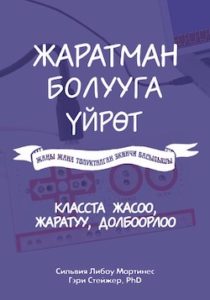PUBLISHED MAY/JUNE 2021
by
Deb Vanasse, Reporter,
IBPA Independent magazine --

Deb Vanasse
Subsidiary rights provide an opportunity for publishers to make the most of their assets, adding a potentially lucrative alternative revenue source.
Synopsis:
- Subsidiary rights options include alternative book formats, supplemental materials, serialized content, audio rights, and more.
- Arrangements involving foreign and translation rights can be lucrative if you can avoid potential pitfalls.
- Agents specializing in licensing arrangements can help publishers navigate challenging aspects of sub rights.
Subsidiary rights are the exercise bikes of the publishing business: eagerly acquired but often underused. By accessing help at hand, publishers can make the most of these assets, adding a potentially lucrative alternative revenue source.
As subsidiary rights specialist for the
American Psychological Association (APA), Kimberly Williams affirms the potential of outbound licensing. “Subrights can be very lucrative,” she says, especially for crosscultural content. Through her efforts, APA’s publishing division brings in an average of $500,000 per year, with advances ranging from $20,000 to $25,000 per title.
Likewise,
Sunbury Press has found success licensing subsidiary rights. “It is now about 10% of our revenue in any given year,” says president Lawrence Knorr. Offers for licensing foreign and translation rights, audio rights, and film rights have generally come unsolicited, he says, a fact he attributes to Sunbury’s list of nearly 1,000 titles.
“Many of our titles have been licensed to Beacon Audio for audio production and distribution,” Knorr says. In addition, Sunbury has licensed several titles for translation into Mandarin, and works by Karim El Koussa have been licensed for French and Arabic translations. The company has also licensed film rights on several titles, including some that are currently in production.
Options Abound
Subsidiary rights include alternative book formats such as large print and royalty exclusive book club editions. The rights to supplemental materials, such as workbooks and study guides, can also be licensed, with the potential for the licensee to sublicense within that market. Similarly, commercial and merchandising arrangements may also include sublicensing rights, increasing the market reach.

Roy Carlisle
Serialized content, including excerpts and condensations, can be licensed as first serial rights at a book’s release or as second serial rights after the book is published. Roy Carlisle, director of publishing at
PageMill Press, notes that payment for such arrangements goes straight to a publisher’s bottom line. His experience stems from working with a popular author “whose books were highly praised by a couple of magazines that had millions of subscribers.” Publishers may worry about serialized content having a negative impact on sales, but Carlisle did not find this to be the case. “The experience made me aware of how important it is to consider sub rights with every project,” he says.
At
Gival Press, publisher Robert Giron has also had success licensing serial rights to poems and articles for anthology use. “Mostly, the editors of the anthologies have reached out to us for permission to reprint the items,” he says. “Usually, it’s a flat rate for reprint permission. These revenues for poetry and an article or two have not been frequent, nor the amounts large, but
doing this brings attention to the author’s work and to our press as well.”
Beyond print, audio rights may be licensed by publishers who opt not to produce their own audiobooks. Content, characters, and trademarked concepts can also be licensed for app development or other digital adaptations. Performance rights—dramatic, television, radio, and film—also have licensing potential.

Kurt Brackob
director Kurt Brackob advises publishers to make their titles known to potential sub rights partners. “We are currently licensing the film rights for one of our recent titles to a production company in India,” he says. Noting that film rights can be a bit more complicated than other sub rights, he is tapping the expertise of his company’s law firm in drawing up the licensing agreement. Coupled with the foreign rights Histria has licensed on other titles, Brackob says subsidiary rights are “a welcome additional revenue stream that we hope to grow in the future.”
Beyond Borders

Sylvia Martinez
Provided publishers know which pitfalls to avoid, arrangements involving foreign and translation rights can be lucrative. During a 10-year stint as manager of a publishing program for a think tank, Carlisle garnered substantial income through translation deals with the
Copyright Agency of China (CCA). “Their primary service was that they would accept a PDF of a scholarly book, review it, and then find a scholarly publisher in China—usually a university press—and then the university press would pay our think tank an advance for the translation rights,” he says.
Carlisle negotiated terms in five- or seven-year agreements, which he notes is the typical length for most subsidiary rights licensing. “In my years of doing this, I have discovered only one minor downside, which is that you don’t know how accurate the translation is unless you speak or read the language,” he says. “Multiple translations mean there are multiple opportunities for errors and concerns.” In Carlisle’s case, the potential licensee made the initial overture, which has also been the experience of Sylvia Martinez, president of
Constructing Modern Knowledge Press. “Mostly we have been approached by publishers in a foreign country,” she says. Though she does not count on the income from sub rights licensing, she says it’s nice to have.
 Bill Wood, operations director at American Legacy Media, worked with a Japanese translation firm to negotiate translation and printing rights for
Bill Wood, operations director at American Legacy Media, worked with a Japanese translation firm to negotiate translation and printing rights for God Isn't Here: A Young Man's Entry into WWII and His Participation in the Battle for Iwo Jima
.
Martinez notes that licensing agreements should include an end date, an automatic out clause if the grantee fails to publish within a designated time period, and language that clarifies what happens to the intellectual property when the contract ends. She advises publishers to research tax obligations and warns them not to transfer assets until the advance is in the bank. Publishers also need to weigh the potential risks and complications of licensing beyond borders. Bill Wood, operations director at
American Legacy Media, says a Japanese translator emailed him about a licensing arrangement after reading
God Isn't Here: A Young Man's Entry into WWII and His Participation in the Battle for Iwo Jima. Working with the English Agency, a Japanese translation firm, American Legacy negotiated translation and printing rights with the Aokiri Shoin Company.
Overcoming the language barrier proved a challenge, says Wood. In order to qualify for Japan’s tax exemption, American Legacy also had to hire an international tax attorney, paying a $500 advance. Arranged in 2009, the rights deal has since earned out that advance, but Wood describes the ongoing royalties as “modest.”
 Constructing Modern Knowledge Press’ most recent translation into Kyrgyz for the country of Kyrgyzstan. The book title in English is
Constructing Modern Knowledge Press’ most recent translation into Kyrgyz for the country of Kyrgyzstan. The book title in English is Invent to Learn: Making, Tinkering, and Engineering in the Classroom
, and this is the seventh translation of this book
A Romanian publisher also approached Wood about acquiring rights to another title. Investigating online, he discovered the firm had licensing arrangements with other large publishers, so he proceeded with negotiations. But the potential licensee insisted that Romanian law required them to inspect the manuscript prior to payment. “We held off for a long time, until we were at a contractual stalemate,” Wood says. “We finally agreed to send a large portion, which satisfied them, and they sent a modest advance, equivalent to $100.”
After the agreement was inked, the Romanian firm asked permission to make edits, which American Legacy refused. Under the contract, the licensee was to provide Wood with copies of the book in translation, but he never received them. Then he discovered that the Romanian company had licensed the book in other languages, including Russian and Chinese. “We have not received a penny in compensation,” he says. “We have issued the international equivalent of a cease-and-desist order, which was summarily ignored.”
Wood advises publishers to weigh the complete costs of international licensing. “Expect complications and hiccups, like complying with international banking laws, as well as foreign tax issues that differ from country to country,” he says. “Remember, you have little recourse when things don’t go your way. They [the licensees] hold all the assets and can call the shots because you are not in their country.”
Help at Hand
Agents specializing in licensing arrangements can help publishers navigate trouble spots, as publisher Yosef Lapid of
Lapid Children’s Books discovered when he procured licensing agreements for his
Snowman Paul series.
The Sylvia Hayse Literary Agency negotiated a sub rights contract with a Chinese firm, and though payment took over a year, Lapid says the deal has led to a “far more significant opportunity” that he is currently pursuing. “Our success was clearly facilitated by the fast-approaching Winter Olympics in China,” he says. “Our marketing strategy was shaped with this anticipation in mind.”

Victoria Sutherland
publisher Victoria Sutherland represents independent presses at foreign rights shows around the world, including the Beijing Book Fair, the
Bologna Children’s Book Fair, and the
Frankfurt Book Fair. “Most foreign rights agents would prefer to work with other rights agents,” she says. “Their experience will pay for themselves in added royalties, new partners, and babysitting the contracts after signing.”
Cypress House has licensed movie options, gift and branded corporate editions, kits and toy packages, and translations rights for its own titles and also for those of other independent presses. President Cynthia Frank says the licensing deals are typically initiated through trade shows and email outreach to agencies, scouts, and publishers.

MJ Courchesne
“Some agencies ask us to draft an agreement, which we base on IBPA’s agreement prepared by Jonathan Kirsch, after they’ve made an offer we like,” Frank says. “Some provide agreements, which we then review and ask for whatever changes we deem appropriate.” She notes that the rights market has been strong in recent years, with heightened interest in audio contracts during the COVID-19 pandemic. Helping publishers with both inbound and outbound licensing is the passion of Mary Jo (MJ) Courchesne, founder of
Gryphon Publishing Consulting. After working with the rights team at a major publishing house, she says she “fell in love with subsidiary rights and never looked back.”
At Gryphon, Courchesne only takes on projects where she expects success in making a match. “Revenue and royalties can vary contract to contract, so there's no real set amount that I advise [my clients] to aim for,” she says. “If the market is small—say it’s for translation rights in Bulgaria—the fee might only amount to a couple hundred dollars. But if that’s more money than you had before, and if it’s a good partner that might lead to more visibility for the book or more deals down the line, I think it’s worth considering.”
Like Frank, Courchesne notes recent market changes due to COVID-19. “I think the pandemic allowed companies to experiment and provide access to more titles and different formats than before,” she says. “There are some interesting things going on in the audio space right now, as well as with subscriptions in the e-book space.”
Platform Potential
Like much of publishing, subsidiary rights deals depend on discoverability and communication with potential partners. Yet these can be hard to achieve, especially when the potential parties are on opposite sides of the planet. That’s where a platform like
PubMatch, a joint venture of
Publishers Weekly,
Combined Book Exhibit, and
American Collective Stand, can make all the difference. The idea for PubMatch originated from a meeting between Western and Chinese publishers at the 2008 Beijing Book Fair, explains founder Jon Malinowski. What started as an online platform for communication and cooperation among international firms soon became a rights platform. Originally designed to facilitate licensing of foreign and translation rights, PubMatch also offers space for other sub rights deals.
For an annual fee of $20, a publisher can list up to 20 titles on PubMatch; fees for larger lists increase proportionately. “We want to keep it inexpensive so authors and small publishers can use it,” Malinowski says. If the parties negotiate a deal using the platform’s boilerplate agreement, PubMatch takes 15% of the proceeds. Alternatively, deals can be arranged off-platform.
John Wiley and Sons has uploaded its entire list onto PubMatch and is now doing upwards of 10 licensing deals a week, Malinowski says. “The system works when a publisher can put resources into it and spend time to get results,” he says. One tactic that has worked well for Wiley is offering flat rate deals to lower tier territories such as Bulgaria, Croatia, China, and India—anywhere with lower price points on books.
PubMatch is solely an exchange platform; it doesn’t promote titles or broker deals. For small independent publishers entering the licensing market, Malinowski says offering modest flat rate deals can be helpful—say a $500 or $1,000 advance to license a title for a year or two.
Deals arranged in-platform specify a 30-day period for sellers to vet buyers. “Be sure you’re selling to someone who won’t pirate your books,” Malinowski says. As an added safeguard, PubMatch only shows potential buyers 25% of uploaded manuscripts, converted to noncopyable and nonprintable image files.
Of course, simply listing a title among the other 250,000 or so on PubMatch won’t result in buyers clamoring for a deal. Malinowski suggests publishers attend webinars and book fairs to learn about whichever markets they want to pursue, then reach out to buyers that match their content. Book fair interactions have become easier with Global Rights Exchange, a platform developed by PubMatch to facilitate the online Bologna Book Fair. Improvements for this year include a translatable chat feature and video meeting interface. Malinowski believes hybrid/virtual models for book fairs will “absolutely” continue beyond the pandemic, allowing smaller publishers even more access to licensing opportunities.
A Win-Win
Approached correctly, sub rights licensing is a winwin for publishers, says Courchesne. “It’s not the primary way for a publisher to generate revenue, but it certainly lifts the profile of a book or publishing program, and any additional revenue is always good for the bottom line,” she says. “It also allows publishers and authors a way to experiment in new formats without sinking additional overhead into the project.” To make the most of this alternative revenue stream, publishers first need to understand the various sub rights they have acquired. They also benefit from learning about markets and terms. Contracts are fairly standard, says Knorr, and unless the deal is complex, a well-informed publisher may be able to negotiate without an attorney.
With agents and platforms like PubMatch at the ready, there’s no reason to let sub rights languish. The options are many, and so are the opportunities.
List of Subsidiary Rights
- First serial – Use of serializations, condensations, excerpts, digests, etc., in newspapers, magazines, other periodicals, or books before publication of the work in book form in the relevant territory.
- Second serial – Use of serializations, condensations, excerpts, digests, etc., in newspapers, magazines, other periodicals, or books after publication of the work in book form in the relevant territory. Book club – Royalty exclusive.
- Storage, retrieval, microfilm, microfiche, other forms of nondramatic electronic reproduction – Now existing or which may in the future come into existence; nondramatic readings of the work, in whole or in part.
- British hardcover and/or paperback – This may include the right of such licensee to sublicense ancillary rights in that market.
- Foreign – This may include the right of such licensee to sublicense ancillary rights in that market even where such rights are not granted to the publisher in the English language.
- Translation – This may include the right of such licensee to sublicense ancillary rights in that market even where such rights are not granted to the publisher in the English language.
- Other book publication – Including, but not limited to, large format, large print editions, mail order, calendar.
- Audio recording
- Electronic editions – Including verbatim transmissions of text and electronic adaptations in any form or method of production or transmission other than print now known or hereafter developed, intended to make the work available in visual form for reading including but not limited to any electronic and digital versions in any electronic, digital or similar form, including any enhancements that incorporate functionality, photographs, illustrations, animation, video footage, sound, or other text. Such electronic productions may include bookmarking, highlighting, a dictionary tool, nondramatic audio and/or animation, and/or such other features that are or may become customarily included in such productions.
- Commercial and merchandising – Derivative products such as the use of a title or character for greeting cards, clothing, calendars, and which may include the right of such licensee to sublicense ancillary rights in that market.
- Supplemental Materials – Such as workbooks, study guides, curriculum, educational materials, and which may include the right of such licensee to sublicense ancillary rights in that market.
- Performance – Television, radio, dramatic, motion picture rights, and allied merchandising rights derived therefrom.
- App development – Based on the content, characters, or trademarked concepts unique to the work. This may include the right of such licensee to sublicense ancillary rights in that market.
- Transformative digital editions or digital adaptations – Digital or electronic products or services, now known or hereafter developed that are derived or adapted from the work or portions of the work that may include portions of the work or incidental portions of the work and/or any material contained in the work.
Deb Vanasse is the author of several books, including two forthcoming titles with West Margin Press. She also works as a freelance editor.
Learn more about this topic: